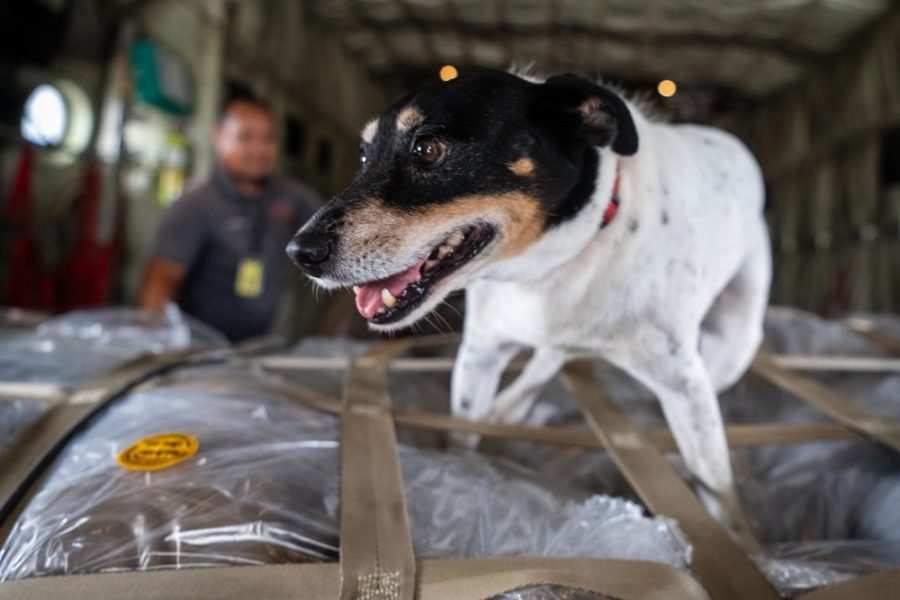ANDERSEN AIR FORCE BASE, Guam—For the past five years or so, Air Force leaders have promoted the idea that Airmen need to be “multi-capable” or “mission-ready,” prepared to step into unfamiliar roles to help accomplish a mission in unfamiliar circumstances.
Few Airmen embody that concept better than Tech Sgt. Robert Hall. Normally a maintainer with the 932nd Aircraft Maintenance Squadron at Scott Air Force Base, Ill., Hall took on the role of administrative assistant for the planners supporting a massive wargame known as the Department-Level Exercise series, which saw more than 12,000 troops, hundreds of aircraft, and at least six international partners practicing air warfare together across the Pacific Ocean.
Much of the work overseeing the DLE was done at the Deployed Operations Center here on Guam, a one-story building where troops from a half-dozen countries flitted between planning cells and secure briefing rooms to coordinate airlift, air refueling, and other missions. It’s like any office building, except nobody knew where anything was since they were all visiting from out of town.
That’s where Hall came in. From behind the counter in the DOC’s entryway, the Airman did whatever it took to keep the ad hoc nerve center running: taking out the trash, making coffee, putting together office furniture, or driving people around to work on the generators powering DLE operations across the base.
“I’m here to support,” Hall said, shortly after an Airman from Korea asked to borrow a stapler, and shortly before an Australian aeromedical evacuation specialist asked for thumbtacks.
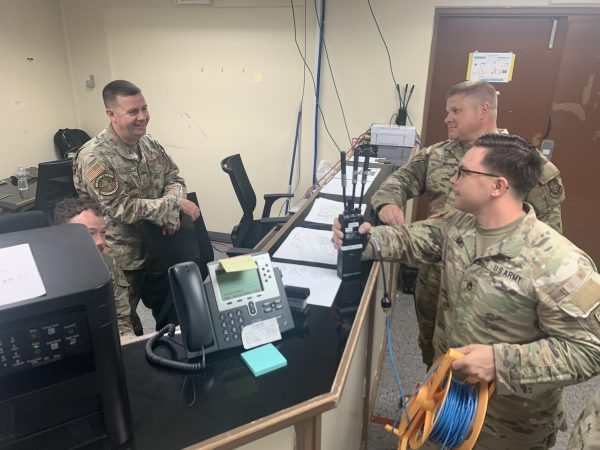
Unfortunately Hall had no thumbtacks, which meant another entry on a sheet of paper on the counter titled “contractor asks”: a list of items for a contracting officer to buy, including printer ink, dry-erase markers, and Post-it notes. Beside the shopping list was a stack of maps of the base, and a list of restaurants and things to do on Guam.
Much of Hall’s job was figuring out who to talk to when the secure internet connection failed or the medical staff needed a rental car. That was tough to do in the early days of the exercise.
“The first few days were stressful because we didn’t have a lay of the land,” he said. “We were driving around trying to find all the right buildings.”
Post-it notes and rental cars may sound mundane with stealth fighters and strategic bombers parked on the ramp a half-mile away. But none of the troops, equipment, or supplies that those high-end platforms rely on could get to the fight without the day-to-day details that Airmen like Hall put into position.
“I spent most of my first few days here walking and driving to different agencies on base just putting faces to names, getting phone numbers, and knowing who to talk to,” said Lt. Col. Kelsey Payton, who oversaw air refueling operations at the exercise.

This was not the first time Air Force transport and tanker crews launched a large operation out of Guam. Two years ago, the island was at the center of Mobility Guardian 2023, another exercise that spanned the Pacific. But most of the Airmen running the show this time were not at MG23, Hall said, so many lessons had to be re-learned and contacts re-made.
Among those contacts were customs agents who board newly-arrived aircraft to check for tree snakes and other invasive species, aerial port Airmen to take cargo off of aircraft, and ground transportation to move the cargo and passengers to the right place. Not knowing who to talk to for any of those tasks could delay missions for hours.
“There’s this laundry list of things that seem like small details, but in the grand scheme of things, it can have ripple effects across the whole operation,” Payton said.
The ripple effects begin before troops even leave their home base. One headache for Capt. Lynley Hummel, the officer in charge of maintenance for the C-130 transport plane element at Guam, was making sure all of her maintainers at Little Rock Air Force Base, Ark., were medically ready for the trip.
“People were dropping even the day prior,” for things as simple as not having a flu shot, she said. “We had to do some swap-outs … You have to be able to flow with the punches.”
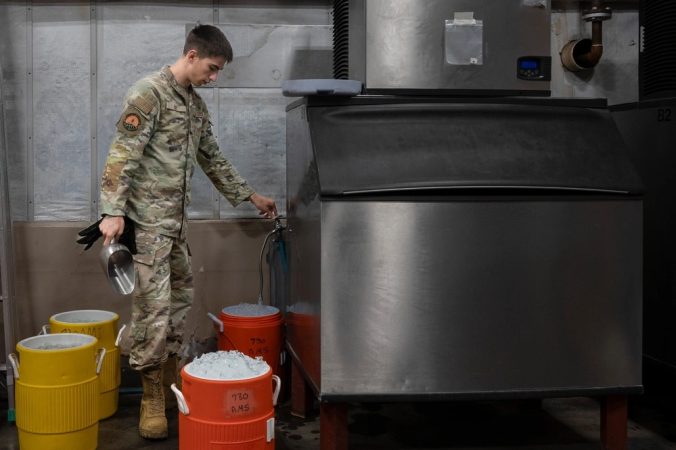
Capt. Milton Doria, commander of a C-17 transport jet flying from Travis Air Force Base, Calif., encountered some of those punches during a pre-dawn stop for gas at Hawaii en route to Guam. One of the four engines on the C-17 needed a fix, and the government purchase card Doria would have used to pay the nearly $78,000 gas bill stopped working, forcing him to fill out an obscure form as the sun rose over the tropical island and his $202 million aircraft.
“You learn something new every day,” he said later, after taking off again. Delays like that can be costly in a movement as large as the DLE, where aircraft must space out their arrival times to avoid overwhelming the base support system.
“If we all show up to the next airport at the same time, they won’t have enough fuel trucks to fuel us all, and it causes further delays,” Doria said. “We have to try our best to remain staggered.”
But how one flies into and out of an airfield is itself shaped by the smallest details, such as what material the runway is made of. Concrete, asphalt, or coral runways have different friction factors, which affects how long it will take a landing aircraft to stop or take off, which affects how hard the pilots must push the engines, and so on.
“It’s a big deal for a pilot, because we have to make sure we are going to be able to land there safely,” said Lt. Col. Edward Silva, who oversaw C-17 operations in the DLE. There is greater variation in runway materials in the Pacific than in other theaters, he explained.
“Normally in the United States, or even in Europe, you’re not concerned too much with that, but here you are.”
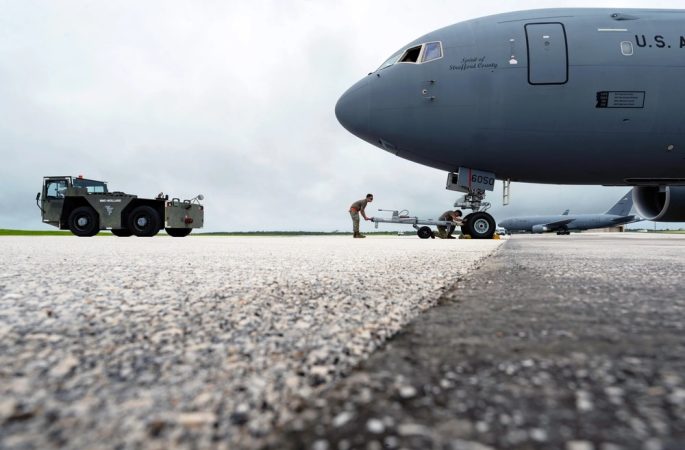
Beyond unique runway conditions, the Pacific also has the international date line, which puts Guam 14 to 17 hours ahead of Air Force officials in the continental U.S. That meant beyond finding spare tables, chairs, and refrigerators for the C-17 planning room, Silva also had to put someone on night shift to man the phones.
“Our midnight shift is probably the busiest when it comes to coordinating with command and control,” he said.
Hosting large operations is something of a pastime for the 36th Wing, the host unit at Andersen. That’s been the case since at least August 1945, when 836 B-29 bombers launched from Guam to attack Japan, wing commander Col. Charles Cooley explained.
His team spent the past year preparing for the DLE guests to minimize strain to the system, but there are always unexpected complications. This year, a prime example was transportation.
“Moving the large volume of Airmen around the base and out to aircraft on time for missions, as well as back to their hotels at the end of their missions, requires lots of wheels,” Cooley said. “Even though we contracted for additional vehicle support, we needed further capability to fill the demand, which we addressed by modifying bus contracts and finding ways to increase access to vehicles for members.”
The need for wheels was particularly real for Payton, the aerial refueling planner, whose dozen or so tankers were parked on opposite ends of the base’s two-mile long runway.
“The fighters have unique parking needs, whereas we don’t have a lot of requirements other than just, we’re big, so we end up having to flex a lot,” she explained.
That meant Payton and her team spent much of their time driving in circles around the airfield, dropping off and coordinating with air and ground crews, some of whom had just stepped off a rotator flight and didn’t know where to go.
“Folks come off the plane and they’re like ‘I don’t know where my hotel is, I’m not sure who to check in with,” Payton said. “I see it probably 10 times a day, to be honest.”
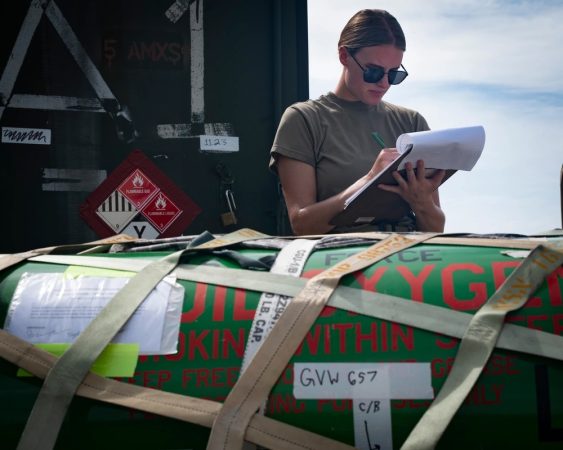
Payton said if she could wave a magic wand, it would be for Airmen on the flight line to have unlimited on-hand access to the basic things to stay fed, hydrated, and comfortable despite the long shifts in tropical humidity.
“My production superintendents are constantly running around in trucks with water and food and it’s still not enough,” she said. “If we can take care of those little things, Airmen’s lives are easier, aircraft would be fixed faster and launch on time more.”
There are no magic wands, but when there are a million details to be sorted out, it helps when more people like Hall or Payton step up to take care of them.
“It’s not walking by the piece of trash, right?” she said. “If you see something that looks like it’s not getting taken care of, it’s just picking it up and moving out with it.”
